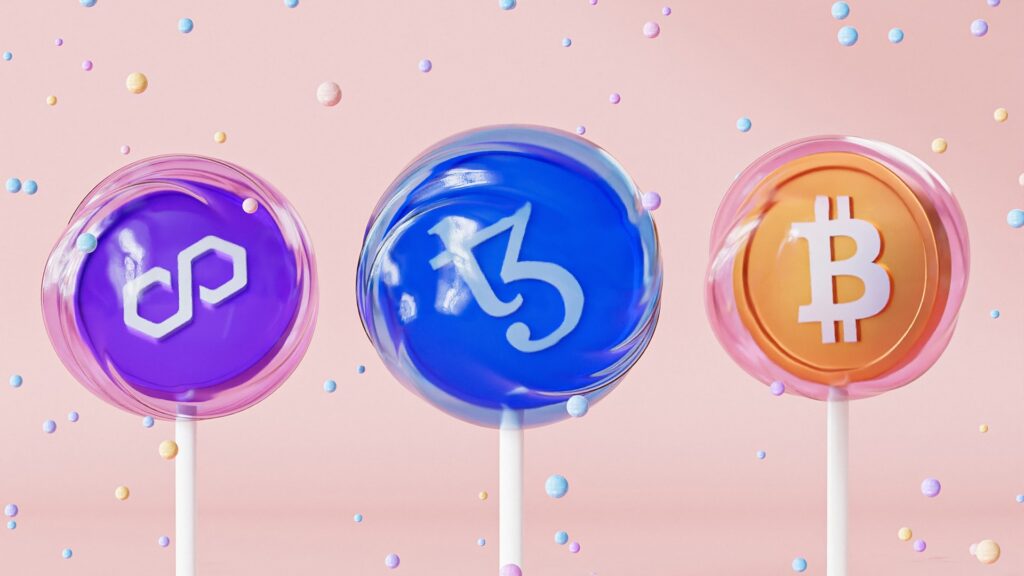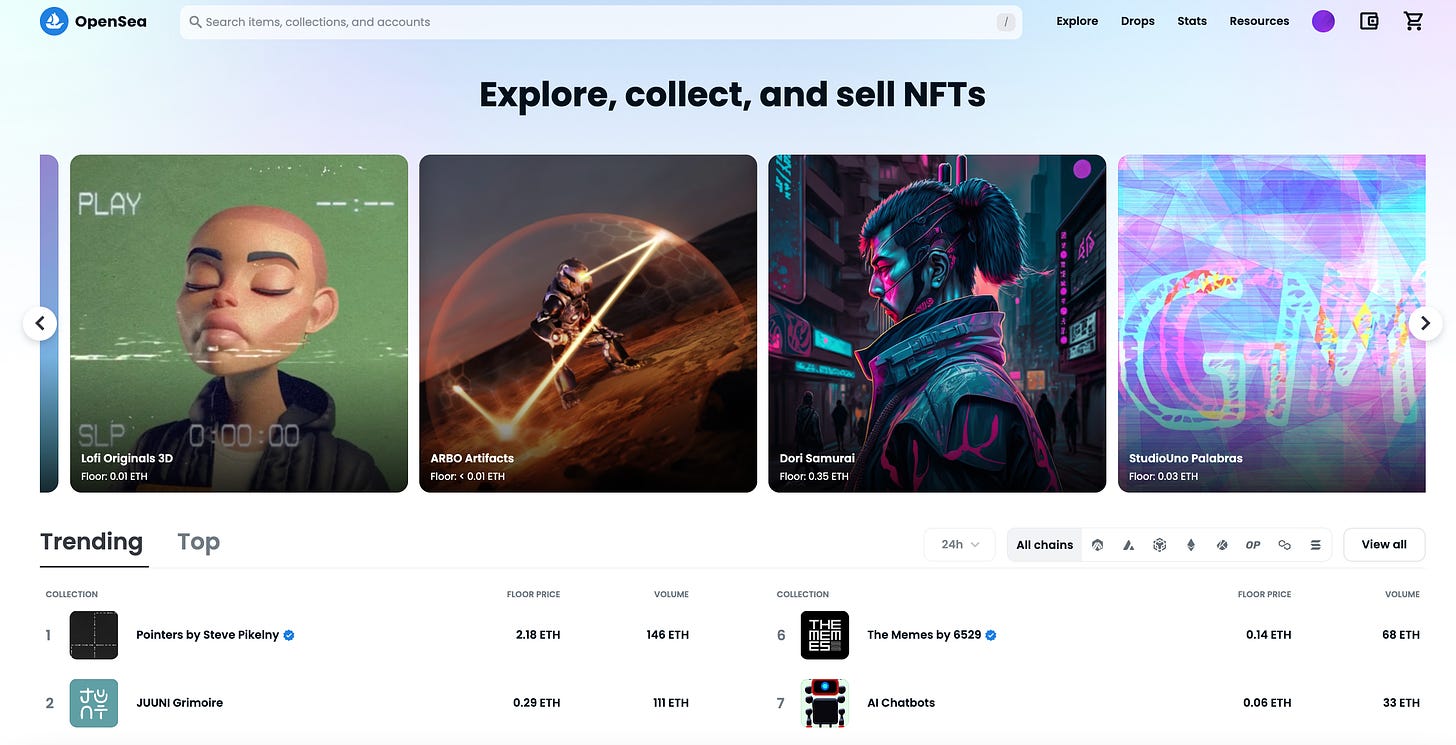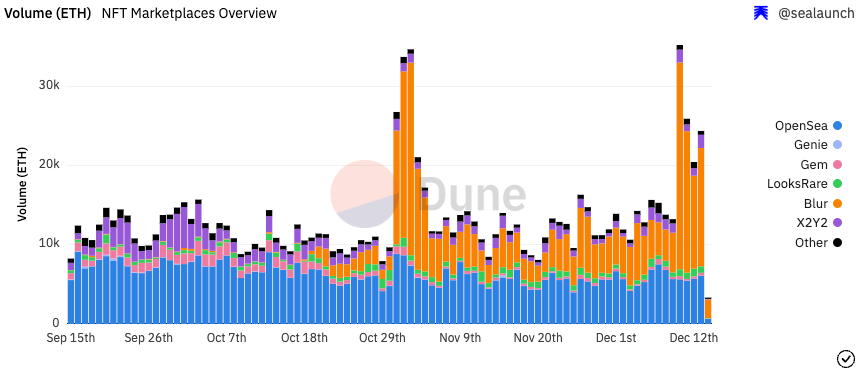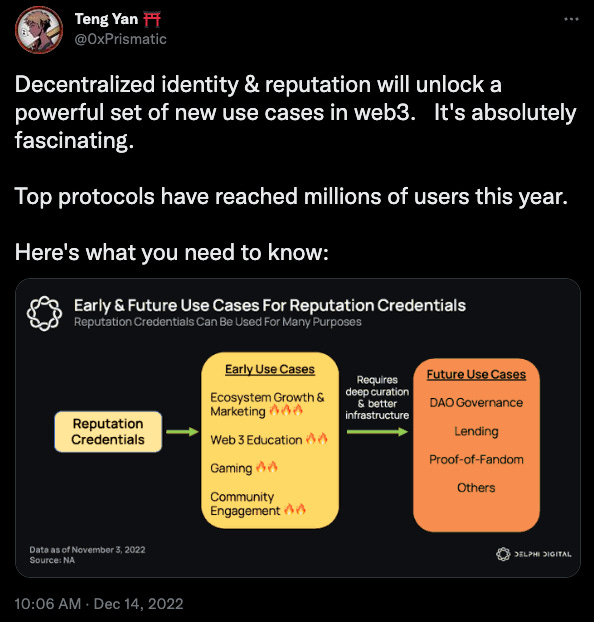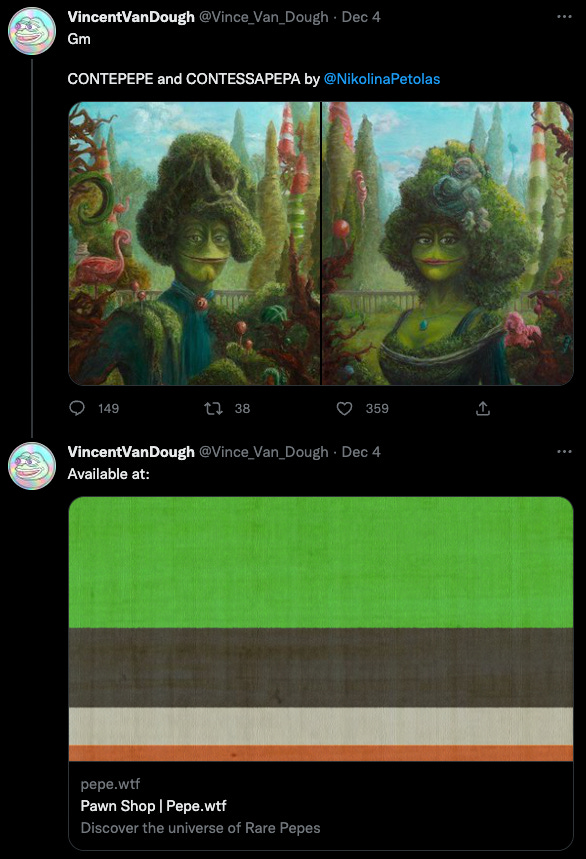We are reliant on good taste, until the infrastructure and applications around identity, social and NFTs mature.
by Teng Yan
Discoverability in NFTs
Earlier this month, I had a wonderful conversation with the founder & CIO (@Simiao) of a crypto fund. It left many thoughts swimming in my head, and I have been taking some time to digest them.
Among other things, we discussed how discoverability is a significant problem in NFTs today. The big question is: how do people find NFTs interesting to them?✓
OpenSea is an excellent marketplace to buy and sell if you know what you want. With a few clicks, you can find the collection you’re interested in and make a trade. Conveniently, it is often the best place for liquidity too.
But OpenSea is not where traders and collectors hang out and collectively discover the latest, most fashionable NFTs. The top volume and trending collections get featured on OS’s home page, enticing us to look. 99% of the time, I’m not interested. It’s a blunt instrument that misses more often than not. There is zero personalization to the user.
Another telling sign: a significant amount of OpenSea sales volume goes through NFT aggregators like Blur and Gem, rather than the OS main website. User behavior on marketplaces is very transactional, it’s all about getting the best price.
In Web2, big tech companies have made discoverability easy. Everywhere we go, we are constantly served with things that entice us to spend our hard-earned money and time. And they’ve gotten very, very good. I’ve bought T-shirts, pet toys, and even a posture corrector (a small device that you paste on your back and vibrates when you slouch) from Instagram ads.
Big tech captures large amounts of user data and feeds it through machine learning algorithms: every single click we take on Instagram, and every search we make on Google is recorded. They have sharpened their algorithms to the extent that they often know what we want better than ourselves.
Getting to Better Discoverability
How do we help people find what they want more easily in NFTs & Web3? A few thoughts:
1. Decentralised identity and verifiable credentials enable a much richer picture of an individual to develop on-chain beyond just transfers of financial value. For example, POAPs represent the history of your attendance at supported events. If you have a collection of IRL music concert POAPs, it indicates that you could be excited about music NFTs. You get recommendations for the existing and upcoming NFTs that you’re likely to appreciate best.
2. Existing brands will lead the charge. Every brand will have a Web3 presence. This is inevitable. In the 1990s, people thought that only news and media companies needed to be on the internet. It was unthinkable for companies or individuals to have their own websites. I see the exact same parallels with Web3 today.
As brands get involved in Web3 and give out NFTs along with their physical & digital products, they create on-chain social graphs of their engaged customers. This becomes the connector between wallets with consumer profiles. Once proprietary to brands, customer preferences could be more widely available on-chain. Over time, it will be easier to identify what people want. We will have to surmount privacy concerns, but the benefits seem to outweigh the risks, and there will be creative ways around this.
The protocols that control the social graph for Web3 users will be immensely valuable and powerful. They will be the kings in a new era of the internet, similar to Google and Apple today. I’m optimistic that we’re not just recreating these giants in Web3. These networks will be built much more decentralized, equitable, and transparently.
Good Taste Still Rules Today
BUT let’s take a reality check: the infrastructure and applications around identity + social are more of a vision of the future today. The march of progress will continue upward slowly, in step-wise improvements and bursts of innovation. It will take many years to develop and mature.
Meanwhile, we continue to rely on people with good taste — the Tastemakers — to determine what is culturally significant, what is hot today, and what we should buy more of. Memetic desire is genetically programmed into every one of us.
Our favorite influencers, like Gary Vee, Kevin Rose, Vincent Van Dough and DCInvestor play a big part in our choices. It could be subtle (changing a profile pic or including an NFT on their Twitter banner) or overt (direct mentions of specific NFTs). Some of this is well-deserved: good taste comes from domain knowledge, experience, and track record. Just avoid the grifters: you know one when you see one.
Influencer marketing is highly effective in Web3 & NFTs today because we don’t have good alternatives to discoverability. Yet.
And it’s not necessarily a bad thing. We have formed communities around influencers and people with similar interests, aligned by shared beliefs and NFT ownership. It doesn’t make sense to fight Web2 on their turf: in the near term, it is highly unlikely that anyone will create a recommendation algorithm more powerful than Tik Tok’s.
Instead, we forge ahead with our favorite weapons — community and good taste.



